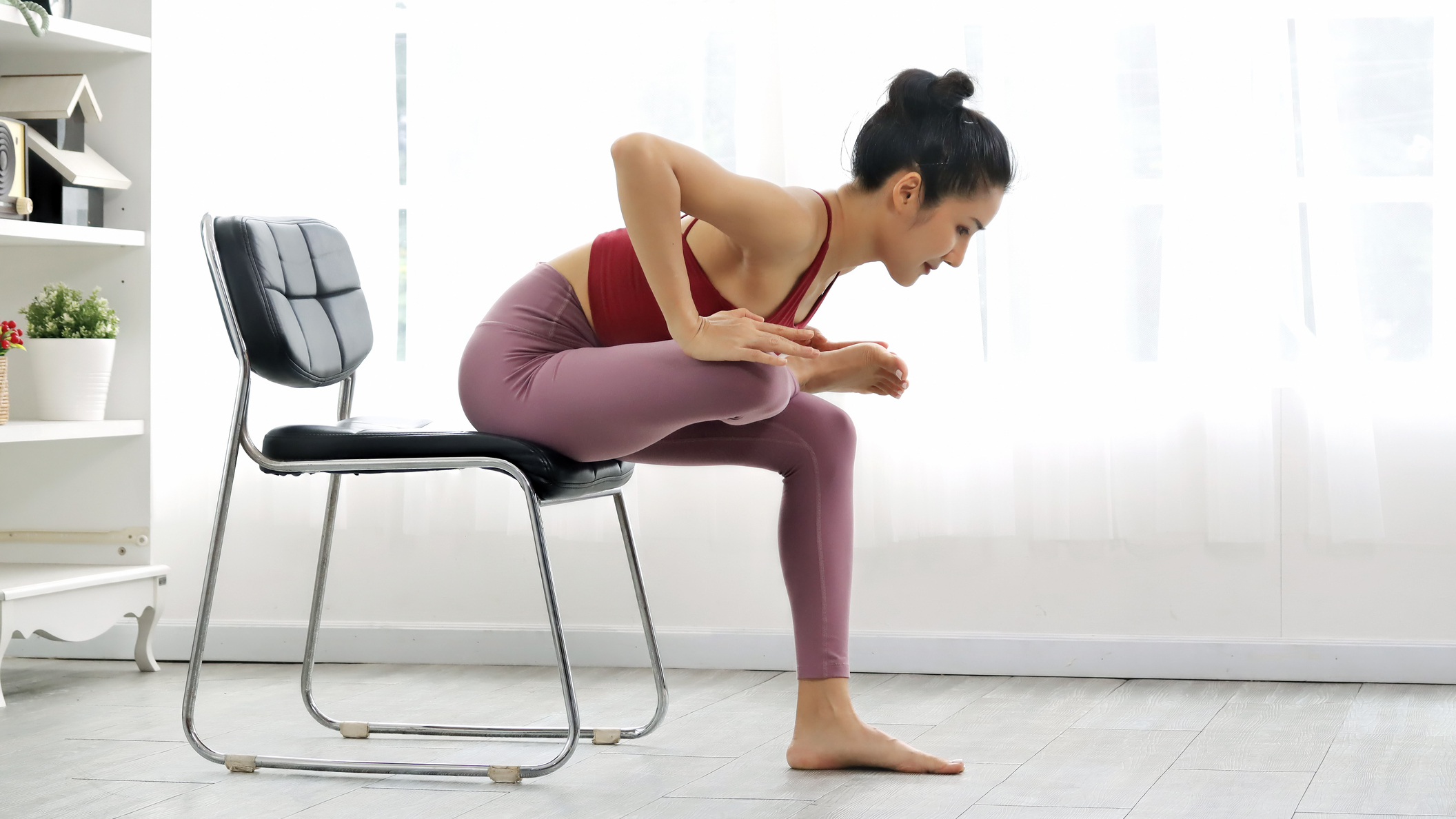A Pilates instructor says these six moves will help you walk without joint pain
Pilates can be a great help if you experience muscle or joint pain while walking—here are six entry-level moves to start with

Walking is one of the simplest ways to move your body and it's very, very good for you. It can help you lose weight, de-stress and improve your bone health.
But it might not feel so easy to put your trainers on and get out the house if you experience pain or discomfort while walking.
There are many reasons why you might get pain in your muscles and joints while walking, but it’s often due to a lack of mobility or strength.
“The mechanics of walking involves primarily the joints and muscles of the hip, knee and ankle,” says Helen O'Leary, physiotherapist and founder of Complete Pilates.
There’s a straightforward way to deal with this, though, and that’s to strengthen and stretch the muscles and joints that are uncomfortable while walking.
Pilates is a low-impact workout that promotes strength, mobility and balance, and according to O’Leary it’s one of the best ways to improve the way you walk.
“Pilates is a fantastic form of exercise to improve leg strength,” says O’Leary. “To walk well, we also need our joints to be nice and mobile. Through supported stretching and other mobility exercises, Pilates can help improve the range of motion of the lower limb joints, as well the spine.”
Start your week with achievable workout ideas, health tips and wellbeing advice in your inbox.
You might not realise it, but your core—the muscles in and around your midsection—are engaged while walking, which is another reason why Pilates can be so helpful.
“When walking, we require balance and core control to keep us stable,” says O’Leary. “Pilates is well known as a form of exercise that teaches engagement of deep core muscles that improves core and trunk stability.”
Finally, Pilates can help you work on breath control, something that can come in handy if you’re not used to moving around for a long time.
“As we get older and we find our cardiovascular system is perhaps not as strong as it used to be, learning to control our breath during harder exercise can be very useful,” says O'Leary.
Three pre-walk exercises
“If you are a relatively sedentary person, you can do a few things before you go for a walk to help make it feel easier,” says O’Leary.
Here are the exercises she recommends.
1. Deep squat
Sets: 1 Time: 30sec
- Stand with your feet wider than hip-width apart.
- Push your hips back and bend your knees to lower as far as your mobility allows.
- You may find that your heels come off the floor to allow you to be there. Hold on to a banister or similar if you need support.
- Hold this position for time, gently rocking from side to side to help improve your hip mobility.
2. Calf raise
Sets: 1 Reps: 15
- Stand in front of a wall and put your fingertips on it for support.
- Raise up onto your tiptoes.
- Hold at the top for a second before slowly lowering.
If you can do 15 of these with ease, try 15 single-leg calf raises on each side.
3. Leg swing
Sets: 1 Reps: 10-15 each side
- Stand sideways to a wall and place one hand on it for support.
- Swing your outside leg forward and back, keeping the knee bent. Allow your pelvis to rotate and try to let your leg move freely.
Three post-walk exercises
1. Hip stretch
Sets: 3 Time: 10-15sec each side
- Lower onto your left knee with your right foot in front of you.
- Tuck your tailbone underneath to feel a stretch in the front of your thigh. Lean forward a little to intensify the stretch.
- Hold for time, release, then repeat.
- Do all the holds on one side, then switch sides.
2. Seated glute stretch
Sets: 3 Time: 10-15sec each side
- Sit on the edge of a chair and place your right foot on your left knee to feel a stretch in your right buttock.
- Hinge forward at your hips and shift your butt back if you want more of a stretch.
- Hold for time, release, then repeat.
- Do all the holds on one side, then switch sides.
3. Thread the needle
Sets: 1 Reps: 5-6 each side
- On your hands and knees, thread your right hand between your left hand and left knee, rotating your torso so your right shoulder lowers.
- Rotate your torso the other way and reach your right hand straight up.
- Repeat five to six times on each side.
What are the benefits of walking?
If this leaves you wondering if it’s worth trying a whole new set of exercises just to make walking feel better, keep in mind the quite astounding benefits of walking.
For instance, a 2023 study published in the scientific journal GeroScience concluded that walking is a “powerful anti-aging intervention”, because it’s been shown to reduce the risk of serious disease, and it can also improve sleep quality and mental health.
So anything that may help you walk comfortably for longer is worth considering.
Alice Porter is a freelance journalist covering lifestyle topics including health, fitness and wellness. She is particularly interested in women's health, strength training and fitness trends and writes for publications including Stylist Magazine, Refinery29, The Independent and Glamour Magazine. Like many other people, Alice's personal interest in combining HIIT training with strength work quickly turned into a CrossFit obsession and she trains at a box in south London. When she's not throwing weights around or attempting handstand push-ups, you can probably find her on long walks in nature, buried in a book or hopping on a flight to just about anywhere it will take her.





